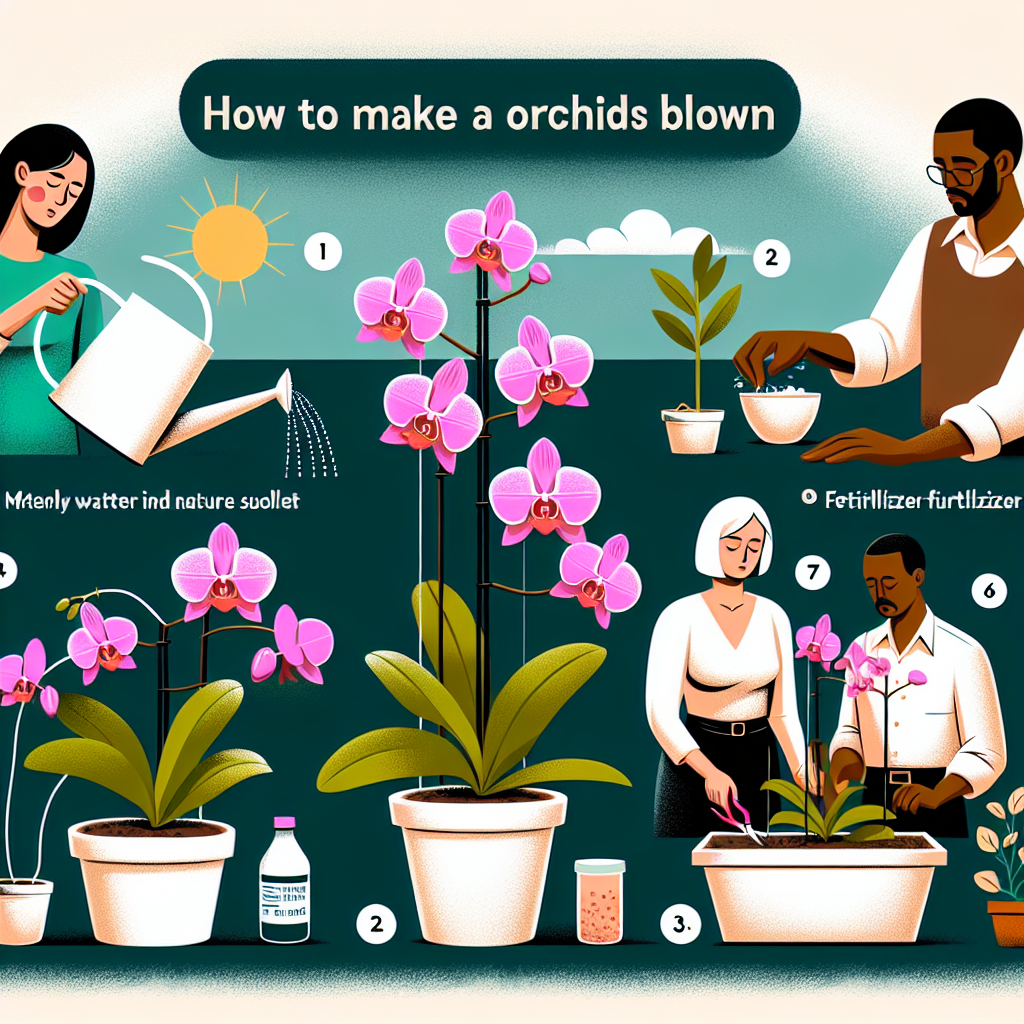
How to get orchids to bloom
Understanding Orchids: A Guide to Blooming
Orchids are among the most beautiful and diverse flowering plants, boasting an array of colors, shapes, and sizes. However, many orchid enthusiasts face challenges regarding their care, particularly when it comes to getting these stunning flowers to bloom. This article will explore effective strategies and best practices on how to get orchids to bloom, ensuring that your indoor garden remains vibrant and colorful.
Choosing the Right Orchid Species
The first step in ensuring your orchids bloom is selecting the right species for your environment. Orchids come in various types, and understanding their specific needs is crucial for successful growth. Here are some popular orchid species and their characteristics:
- Phalaenopsis (Moth Orchid): One of the most popular orchids due to its ease of care and long-lasting blooms.
- Cattleya: Known for their large, waxy flowers, these orchids thrive in brighter light conditions.
- Dendrobium: This species requires a cooler rest period for optimal blooming and features elegant flowers.
- Oncidium: Famous for their vibrant, dance-like blooms, they prefer moderate temperatures and humidity.
Essential Factors for Orchid Blooming
To encourage your orchids to bloom, you need to pay attention to several environmental factors and care techniques. Understanding these aspects will help you create the optimal growing conditions.
1. Light Requirements
Light is a crucial factor for orchid growth and blooming. Different species have varying light requirements. Generally, orchids thrive in bright, indirect light. Here’s how you can ensure adequate lighting:
- Place your orchids near a window with filtered sunlight.
- Avoid direct midday sun, which can scorch the leaves.
- Use sheer curtains to diffuse harsh light when necessary.
2. Watering Practices
Finding the right watering schedule is essential for healthy orchid growth. Over-watering or under-watering can hinder blooming:
- Water your orchids when the top inch of the potting medium feels dry.
- Use room temperature water and ensure proper drainage to avoid root rot.
- Reduce watering during the winter season when the plant is dormant.
3. Humidity Levels
Orchids prefer **high humidity** levels, typically between 40-70%. Here are some tips to maintain humidity:
- Use a humidity tray filled with pebbles and water to create moisture around the plant.
- Consider a humidifier, especially during dry months.
- Misting the leaves occasionally can also help, but avoid getting water on the flowers.
4. Temperature Control
Maintaining the right temperature is vital for orchid health. Orchids generally prefer a temperature range of:
| Time of Year | Daytime Temperature | Nighttime Temperature |
|---|---|---|
| Spring/Summer | 75°F - 85°F (24°C - 29°C) | 60°F - 65°F (16°C - 18°C) |
| Fall/Winter | 65°F - 75°F (18°C - 24°C) | 55°F - 60°F (13°C - 16°C) |
5. Fertilizing for Blooming
Proper fertilization can significantly impact your orchid's ability to bloom. Here are some key points:
- Use a balanced orchid fertilizer, preferably a water-soluble one.
- Fertilize every two weeks during the growing season (spring and summer).
- Reduce feeding frequency during the fall and winter months.
Preparing Orchids for Blooming
Once the environmental conditions are managed, it’s time to prepare your orchids for blooming. This involves understanding their growth cycles and manipulating specific variables to encourage flowering.
1. Understanding Growth Cycles
Orchids go through specific growth phases, including the growing phase, resting period, and blooming phase. Here’s how to navigate these cycles:
- Identify when your orchid typically blooms – many species have specific natural timings.
- Follow the signs of growth, including new leaf or root emergence, indicating readiness for the blooming phase.
- Recognize when your orchid enters its resting phase, which generally occurs in the fall and winter.
2. Creating a Resting Period
To encourage blooming, some orchid species require a resting period. Here’s how to create a suitable environment:
- Reduce watering and fertilizing during the dormant phase.
- Lower temperatures at night to simulate seasonal changes.
- Monitor for signs of new growth, signaling the end of dormancy.
Common Issues That Hinder Orchid Blooming
Despite our best efforts, there are issues that may prevent orchids from blooming. Here are some common problems and solutions:
Lack of Light
“Without adequate light, orchids cannot photosynthesize effectively, leading to poor health and stunted growth.”
Ensure your orchids receive the right amount of light based on their species. Adjust their location if necessary.
Over-Watering or Under-Watering
“Water stress is one of the most common reasons for orchids failing to bloom.”
Ensure your watering routine aligns with the needs of your specific orchid species to improve blooming potential.
Nutrient Deficiencies
“Inadequate nutrients can lead to weak growth and lack of flowers.”
Regularly fertilize your orchids and adjust your nutrient mix based on their growth stage and needs.
Conclusion: Unlocking Your Orchids' Blooming Potential
In summary, learning how to get orchids to bloom takes time, patience, and careful observation of their needs. By selecting the right species, managing light, water, humidity, temperature, and nutrition, you can improve your orchids' chances of producing beautiful blooms. Regular monitoring and adjustments based on seasonal changes will also help ensure a stunning display of flowers year after year.
Follow these guidelines, and soon you will be rewarded with an impressive array of blooms that brings vibrancy and elegance to your indoor space. Remember, every orchid is unique, so keep experimenting until you discover what works best for your plants!
By Guest, Published on September 26th, 2024